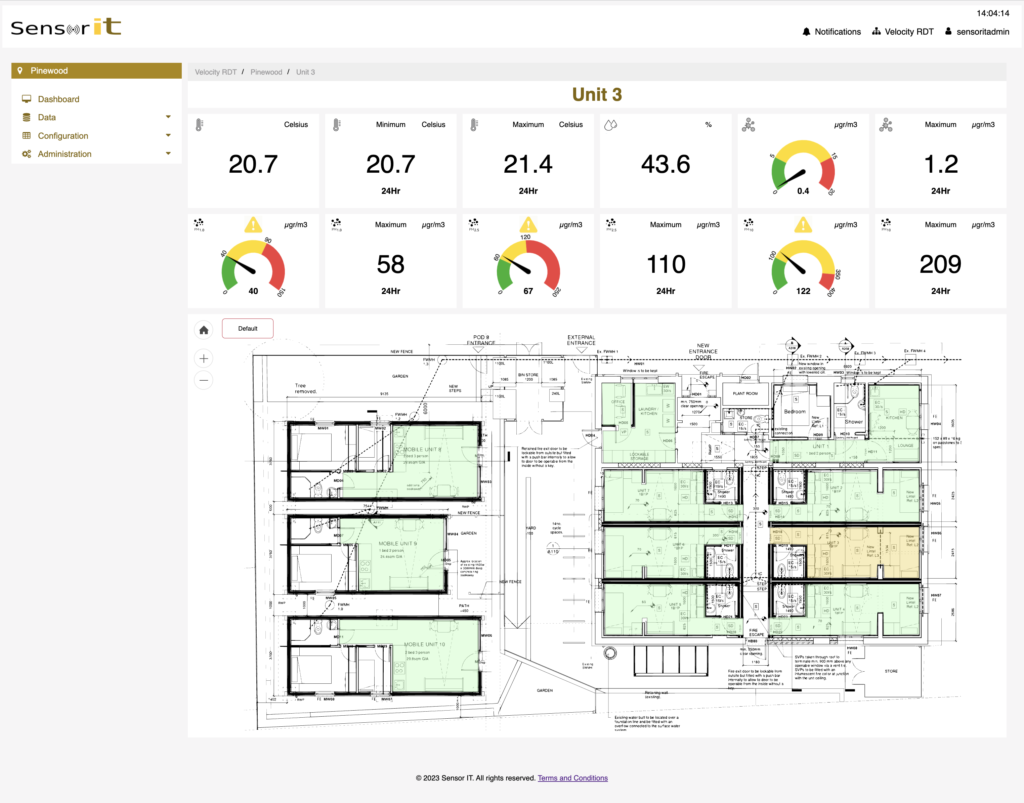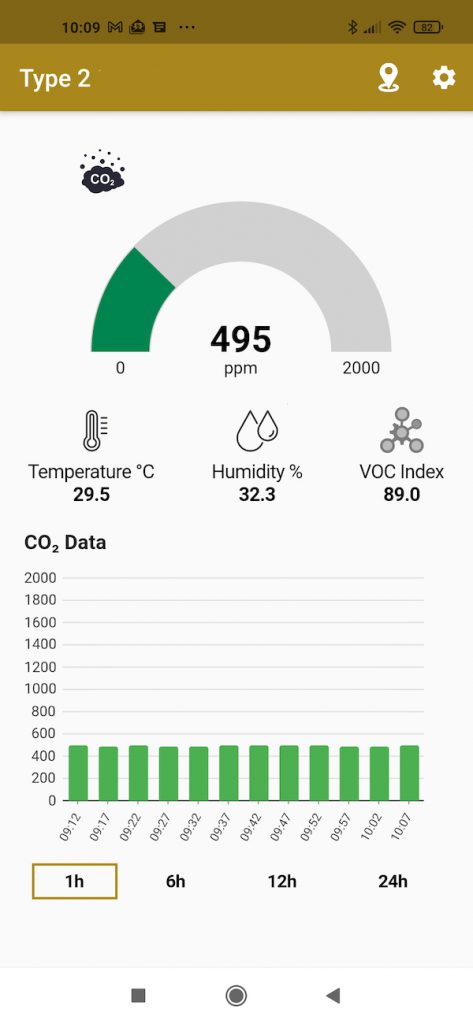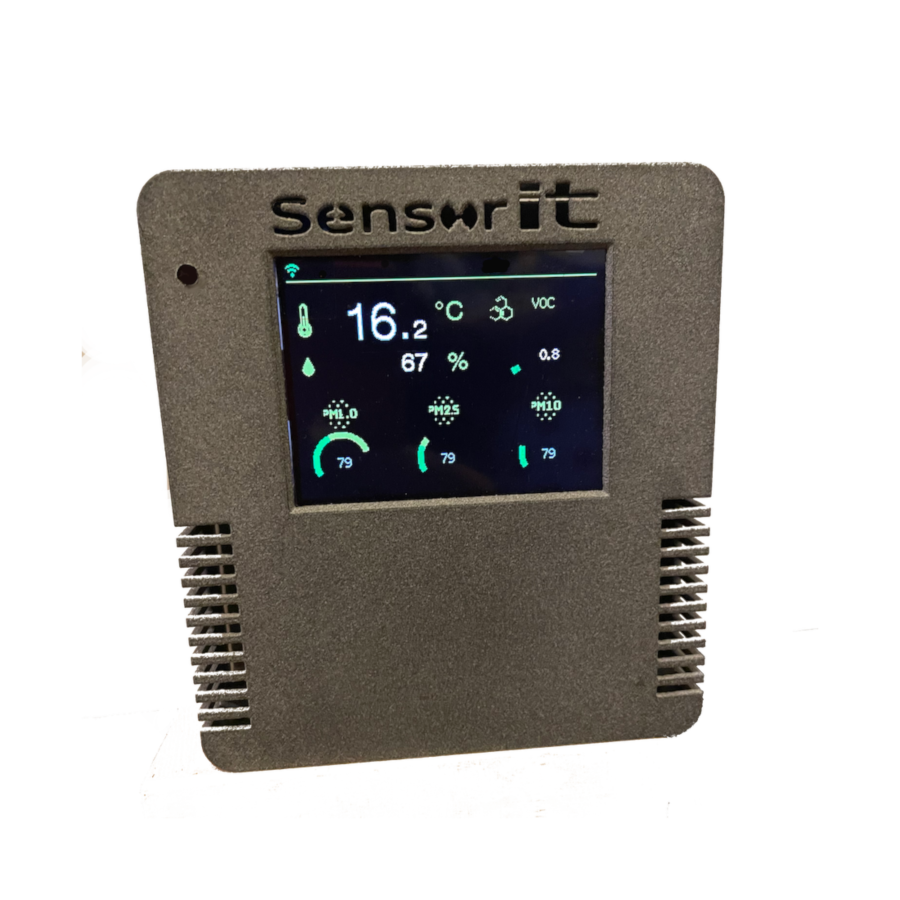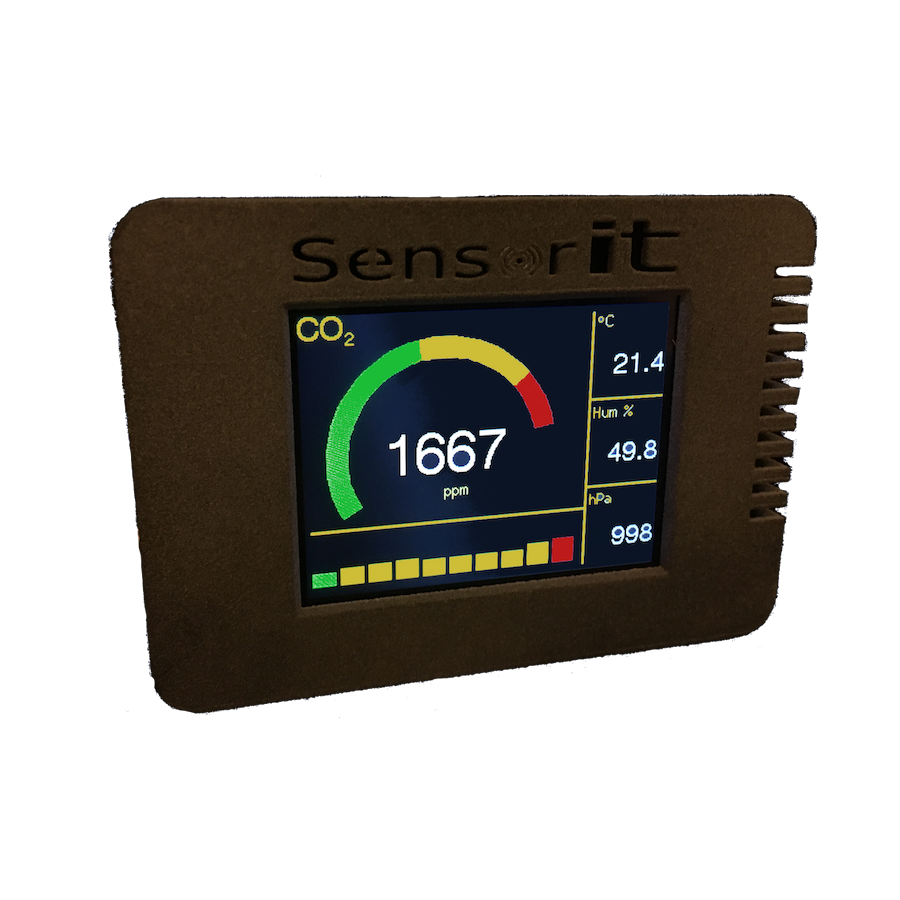See Solution
Air Quality Monitoring
In recent years there has been a growing awareness about the negative health impacts caused by poor indoors air quality, as well as the impact outdoors air quality has on us. Good air quality in buildings is vital for people who spend much of the day indoors, and it is vital that we control the outdoors air quality in our cities, which may have a detrimental impact on our health and general wellbeing.

the Solution
Generally speaking, air quality does affect our health and therefore, badly managed air quality can have economic and legal implications, as represented by the figure below.
Outdoor Pollutants
Pollutants can cause or contribute to short and long-term health problems, including asthma, respiratory tract infections and allergic reactions
Indoor Pollutants
Indoor air pollutants can cause discomfort, increase absenteeism and reduce productivity. Poor indoor air quality strains relationships among employees, family members, teachers and students
Litigation
Air quality that cause health problems can result in costly litigation
Sensor IT’s Air Quality Monitors are based on industrial-level sensors capable of providing detailed, real-time data on air quality parameters, informing users through a real-time Dashboard so that they can make informed decisions and act accordingly. The data sent to our cloud-based dashboard can be done through a number of data communication protocols, from simple WIFI through to more complex IoT stacks such as LoRaWAN, NB-IoT or even cellular 5G: when it comes to technology, we are completely agnostic and can implement whatever our client feels more comfortable with.
All our Air Quality Monitors are fully designed and manufactured in the UK, and are made following the most strict best practices and standards that identify products bearing the CE and UKCA markings. It is also worth mentioning that all key electronic components are sourced locally in the UK.
Technical Details
Design
Our Air Quality Monitors are designed to specific requirements, which include:
Ambient parameters to capture
(See below)
Data communication protocol, format and frequency
User interface
(LCD display, UX design, etc)
Indoor/Outdoor, IP rating and enclosure design
Sensor IT’s Air Quality Monitors, just like all the products we manufacture, are designed and made using UK-sourced components, and are also fully manufactured in the UK.
the Solution
Parameters
Our Air Quality Monitors can include a number of ambient parameters, which are listed below.
Changes in temperature indoors results in massive discomfort to humans. To achieve good indoor air quality it becomes necessary to maintain thermal comfort. A good indication around temperature would be to maintain at around 26°C ± 2.
Elevated humidity promotes growth of various bacteria and molds indoors. This results in high risks for allergies, fever and asthma. On the other hand low humidity may result in sore eyes and throat. Optimum humidity should be 40 to 70%. Maintaining optimum humidity will help achieve good indoor air quality
Not an air quality parameter per se, but helpful in forecasting the upcoming weather conditions.
Volatile Organic Compounds (VOC) can cause several conditions that are detrimental to our health, some of them being as serious as cancer, severe headaches, nausea, injury of the central nervous system, as well as damage to liver, kidneys, nose, eyes and throat
PM 2.5 and PM 10 are the most considered PM sizes while measuring the quality of indoor air. These two sized are known to cause respiratory tract disorders and impair vision.
Nitrogen monoxide belongs to a family of poisonous, highly reactive gases that form when fuel is burned at high temperatures. Nitrogen monoxide pollution is emitted by automobiles, various non-road vehicles such as boats and construction equipment. Breathing high concentrations of Nitrogen Monoxide can make respiratory diseases such as asthma much more serious and even lead to respiratory infections.
Nitrogen Dioxide primarily gets in the air from the burning of fuel. Breathing air with a high concentration of Nitrogen Dioxide can irritate airways in the human respiratory system. Such exposures over short periods can aggravate respiratory diseases, particularly asthma, leading to respiratory symptoms (such as coughing, wheezing or difficulty breathing)
Ammonia is a naturally occurring chemical in the atmosphere, as well as an essential man-made chemical. At room temperature, ammonia is a colorless, pungent-smelling gas and is lighter than air.
Because ammonia is a respiratory tract irritant, persons who are hyper-reactive to other respiratory irritants, or who are asthmatic, may be expected to be more susceptible to inhalation of high concentrations of ammonia.
Smoke is a pollutant that needs to be monitored, particularly in indoors environments. The can lead to respiratory problems and, in extreme situations, to death.
Carbon monoxide is a colorless, odorless, tasteless and toxic gas produced as a by-product of combustion. Any fuel burning appliance, vehicle, tool or other device has the potential to produce dangerous levels of carbon monoxide gas. Carbon monoxide inhibits the blood’s ability to carry oxygen to body tissues including vital organs such as the heart and brain.
Carbon Dioxide is the most commonly present gas which results from respiration process or combustion end products. High levels of Carbon Dioxide may stimulate the respiratory centre to cause dizziness. Confusion, difficulty in breathing, etc
Sulphur dioxide is produced when a material, or fuel, containing sulphur is burned. Globally, much of the Sulphur Dioxide in the atmosphere comes from natural sources. Short-term exposure to high levels of Sulphur Dioxide may cause coughing, tightening of the chest and irritation of the lungs.
Ozone is a molecule made up of three oxygen atoms, often referenced as O3. Ozone is formed when heat and sunlight cause chemical reactions between oxides of nitrogen (NOX) and Volatile Organic Compounds (VOC), which are also known as Hydrocarbons. This reaction can occur both near the ground and high in the atmosphere. Breathing in ground-level ozone can be harmful to your health. If you have asthma, bronchitis, or emphysema, ozone can make your symptoms worse. High Ozone concentrations have also been linked to coughing and pain when taking a deep breath, lung and throat irritation and wheezing and trouble breathing during exercise or outdoor activities.
Not an air quality parameter as such, Noise pollution is an invisible danger. It cannot be seen, but it is present nonetheless, both on land and under the sea. Noise pollution is considered to be any unwanted or disturbing sound that affects the health and well-being of humans and other organisms.
Cloud-based Dashboard
All our monitors implement full connectivity. The data being sent is collected and presented in real-time through a cloud-based dashboard and/or mobile application.


Through a full graphical dashboard, visual, centralised data can be monitored across entire buildings or zones.
Note: Access to dashboard requires access fee
Customisation
All our devices conform to Sensor IT’s Open Architecture Design (SOAD), which introduces a new and innovative concept for Internet of Things devices. This brings a new level of adaptability and customisation to everything we design and manufacture whereby they can be customised to meet particular requirements, as put forward by our customers.
The Air Quality Monitor could, for instance, be redesigned to integrate with the customer’s monitoring, or even their SCADA, systems, with the data transmitted adapted to their specific communication protocol.
target Audience
The global air quality monitoring market size was valued at $4,178.5 million in 2020, and is projected to reach $8,032.6 million by 2030, registering a CAGR of 6.7% from 2021 to 2030. Air quality monitoring device detects and monitors pollutants present in air such as carbon monoxide, nitrous oxide, sulfur dioxide, and volatile organic compound, both indoors and outdoors. The need for air quality monitoring has increased as a result of the necessity to maintain air quality, as poor air quality includes hazardous pollutants that cause health issues. These harmful pollutants are discharged into the air as a result of emissions from numerous industries automobiles and domestic fossil fuel consumption
It is worth considering that some people may be particularly vulnerable to air pollutants and poor air quality, and both increase the risk of developing ill health. Examples include:
- people with a pre‑existing health condition such as asthma, allergies, chronic obstructive pulmonary disease (COPD) and cardiovascular disease
- pregnant women and their unborn babies
- children
- older people
- people who live in poor-quality housing
- people exposed to tobacco smoke in their homes
- people who live in poverty
Related Products
- All Posts
- Case Studies
- Events
- News
- Back
- Smart Healthcare
- Security
- Smart Agriculture
- Smart Home
- Smart City
- Smart Industry
- Smart Mobility

